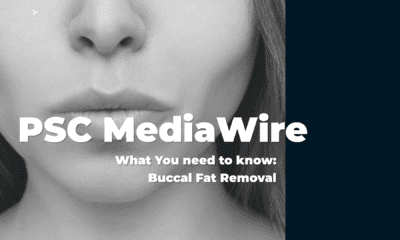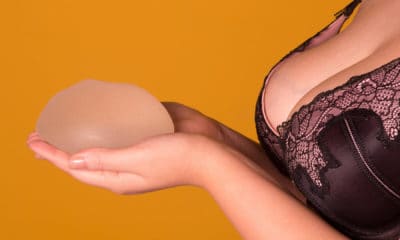“We can now all speak the same bra cup language.” ~ Brad Bengtson, MD and Caroline Glicksman, MD
The Greatest Challenge in Breast Augmentation
What is the number one question women ask while talking to their plastic surgeon about breast augmentation? Patients ask, “what size will I be?” and “what size will this implant make me?” They sound like simple enough questions, but it’s not easy for surgeons to give accurate answers based on bra cup sizes. The Plastic Surgery Channel sat down for an interview with Dr. Caroline Glicksman and Dr. Brad Bengtson about their patented solution to the bra cup sizing dilemma.
By Carolynn Grimes
The Plastic Surgery Channel
Women will often say, “I want to be a 34C.” But what does that really mean? “Well it depends on where you shop for bras,” says Dr. Caroline Glicksman. “If you shop at Victoria’s Secret, a 270cc implant might make you a 34C, but if you buy a Maidenform bra, you might fit in a 34B. And so it goes, in the United States, every bra manufacturer has a slightly different sizing system.
The cc’s in breast implants stand for cubic centimeters, which is a measure of volume. Cubic centimeters doesn’t translate well when it comes to communicating a desired bra cup size between patients and surgeons, that is, until now. Dr. Caroline Glicksman, of Sea Girt New Jersey, and Dr. Brad Bengtson, of Grand Rapids, Michigan are two board certified plastic surgeons and lead investigators for major implant companies. In 2008, they teamed up and collected the clinical data on close to 6,000 patients. Together, they have standardized and simplified the measurement for bra cup sizing.
The Bra Cup
“Bra cups are categorized as if there is a specific or ideal bra cup size, when in reality women’s breasts occur as a fluid range of shapes, sizes and volumes,” says Dr. Bengtson. However, bra cup size is still the most common way women communicate about size. Patients tend to use ‘bra cup language’ without any specific reference point.
Every surgeon has heard the phrase, “I would just like to be a full “C”, and many women will actually come in for a consultation with a ‘cc’ number in mind. Often patients remark, “My friend has a 350cc implant and I want the same cup size and look as her. What they don’t realize,” says Glicksman, “is a 350cc implant on your friend will probably look very different on you. Everyone has an individual chest shape and amount of breast tissue, and one size will not create the same look or bra cup size on everyone.”

The Bra Cup Study
Glicksman and Bengtson looked at the pre-operative and post-operative measurements in nearly 6000 patients undergoing a breast augmentation. The patient’s breasts were measured by taking one measurement across the apex, or the largest part of the breast, and then the patient was analyzed at 6 months and 1 year post-op. Data from over 50 additional surgeons who participated in the breast implant study is included in their analysis.

The measurements were then compared to the data of specific bra manufacturers. “By taking measurements before and after breast augmentation surgery, we can tell women what size they will be in correlation to all the different bra manufacturers,” says Glicksman.
This study is a major advancement because it gives patients and plastic surgeons the ability to speak the same language. “We hope to improve patient education and the management of expectations,” says Bengtson and Glicksman. By giving patients a specific bra manufacturer matched to their breast augmentation result, will help meet expectations and improve communication between surgeons and patients. Bengtson and Glicksman say this new standard should decrease the number of revisions for size change, which currently represents one of the leading reasons for breast augmentation revision.














Facebook
Twitter
Instagram
YouTube
RSS